Ancient Literature Collection (30 Resources)
Digital Logos Edition
Overview
Connect any Bible verse with ancient Jewish and Christian parallels and allusions. The Ancient Literature Collection presents a comprehensive library of resources that populate your Passage Guide with ancient parallels, quotations, and allusions from the Apostolic Fathers, the Talmud, the Mishnah, apocryphal writings, and more. Instantly see any verse’s interpretation, application, and reuse throughout the ancient world.
These ancient religious texts bring key citations and references to your study of Scripture, opening up a new level of connectivity for your research. With 30 volumes covering Ugaritic and Mesopotamean religious parallels to New Testament apocryphal stories and early church writers, you’ll never run short on texts from which your study can draw insight.
Curious how these resources work in Logos? Watch the videos below to see for yourself where you’ll be using them:
For the a larger version of this feature expansion, see Ancient Literature Collection (73 resources).
- Contains Logos resources with extensive Ancient Literature tagging
- Relates implied and explicit parallels from Scripture
- Uncovers cultural and theological similarities between ancient religious texts
- Title: Ancient Literature Collection
- Volumes: 30
- Resource Types: Ancient Texts, Ancient Manuscripts
- Topic: Ancient Near East, Judaica, Early Church, New Testament Apocrypha
- Software Requirements: Logos Silver or higher
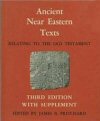
The Ancient Near Eastern Texts brings together the most important historical, legal, mythological, liturgical, and secular texts of the ancient Near East, with the purpose of providing a rich contextual base for understanding the people, cultures, and literature of the Old Testament. A scholar of religious thought and biblical archaeology, James Pritchard recruited the foremost linguists, historians, and archaeologists to select and translate the texts. The goal, in his words, was "a better understanding of the likenesses and differences which existed between Israel and the surrounding cultures."
Before the ANET—as it is fondly referred to—students of the Old Testament were disposed to search out scattered books and journals in various languages to find what this essential resource offers: invaluable documents, in one place and in one language. As one reviewer put it, "This great volume is one of the most notable to have appeared in the field of Old Testament scholarship this century."
Pritchard's ANET, a standard reference for those examining the cultural setting of the Bible, contains translations of many important inscriptions which shed light on otherwise mysterious Bible customs. Included are such things as the Epic of Gilgamesh (containing our oldest Flood parallels), the Nuzi Texts (which, among others, help us understand the life of Jacob), various ancient law codes which have parallels to the biblical code, an early Palestinian ostraka, a wide selection of Egyptian and Akkadian oracles and prophecies, and even a Sumerian lullaby.
[A] very useful book, soundly conceived, competently edited, and beautifully printed. It offers in translation texts of the most important documents which throw light on the Near East background of the Old Testament. As a source book it will be welcomed not merely by Biblical students, but by all ancient historians who concern themselves with the cultures anterior to those of Greece and Rome.
—Archaeology
James Bennett Pritchard (1909–1997) was an American archaeologist who excavated in Israel, Canaan, Egypt, Assyria, and Babylon. He received his PhD and taught Religious Thought at the University of Pennsylvania, and was the first curator of Biblical Archaeology at the university’s museum. His last major excavation was at Sarafand, Lebanon (1969–1974), which revealed the ancient Phoenician city of Sarepta. It was the first time a major Phoenician city situated in the Phoenician heartland had been fully excavated. He was President of the Archaeological Institute of America in 1972–1973, and the recipient in December 1983 of the institute’s prestigious Gold Medal for Distinguished Archaeological Achievement. His major focus throughout his career concerned the relation between material remains and written texts within the context of biblical studies. Pritchard served as editor and consultant to the American Philosophical Society, the American Oriental Society, the National Geographic Society, and the Archaeological Institute of America.
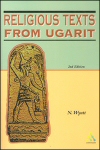
Religious Texts from Ugarit contains accurate and readable English translations of the most important religious texts, along with extensive notes, making these texts accessible to the English reader.
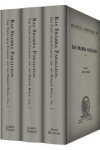
Ras Shamra Parallels: The Texts from Ugaritic and the Hebrew Bible (3 vols.)
- Publisher: Pontificio Istituto Biblico
- Publication Date: 1972–1981
- Pages: 1,663
These outstanding volumes form a bridge between Ugaritic studies and biblical studies. The Ras Shamra Parallels describe and index features in the Ugaritic tablets that shed some light on the Hebrew Bible. Features indexed include: poetic parallel pairs, professions, institutions, political and foreign affairs, literary genres, place names, words, phrases, flora, fauna, minerals, divine names and narrative structures.

The Amarna Letters
- Author: William L. Moran
- Publisher: John Hopkins University Press
- Publication Date: 1992
The Amarna Letters consist of diplomatic correspondence of Canaanite and other rulers with the Egyptian Pharaoh. Dating to the 14th century B.C., these letters are primary source material for the political and military situation of Canaan and the ancient Near East roughly in the age of Moses and the Exodus. This translation, by Assyriologist and Amarna expert William Moran, is the standard English edition, with introduction, extensive notes, and commentary. This work is an essential resource for the study of the Egyptian New Kingdom as well as of Syria-Palestine in the late Bronze Age. It will be of interest both to scholars of the ancient Near East and to students of the Bible.
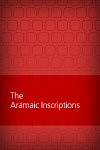
Semitic Inscriptions: Analyzed Texts and English Translations
- Authors: H.H. Hardy II, Charles Otte III, and Michael S. Heiser
- Publisher: Lexham Press
- Publication Date: 2008
This ground-breaking compilation of ancient texts includes Hebrew, Aramaic, and Canaanite Inscriptions. Each text is accompanied by an English translation. The Semitic Inscriptions: Analyzed Texts and English Translations would be extremely expensive to assemble in print form—and now Lexham Press brings them to you in a morphologically-tagged electronic edition!
Contents:- The Hebrew and Canaanite Inscriptions
- The Hebrew and Canaanite Inscriptions in English Translation
- Glossary to the Hebrew and Canaanite Inscriptions
- Glossary of the Morphological Terms in the Hebrew and Canaanite Inscriptions
- The Aramaic Inscriptions
- The Aramaic Inscriptions in English Translation
- Glossary to the Aramaic Inscriptions
- Glossary of the Morphological Terms in the Aramaic Inscriptions
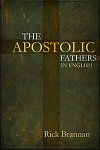
The Apostolic Fathers in English
- Author: Rick Brannan
- Publisher: Lexham Press
- Publication Date: 2012
The “Apostolic Fathers” wrote what has become some of the most important literature in the early church—letters and epistolary documents, homilies and theological tracts, documents on church order, and apocalyptic literature. In fact, some texts came close to inclusion in the New Testament canon. Tertullian regarded Hermas as Scripture, Irenaeus treated 1 Clement as canonical, and Origen regarded the Didache as inspired. Barnabas and Hermas were included in Codex Sinaiticus and 1 and 2 Clement were included in Codex Alexandrinus. The near-canonical status of the writings of the Apostolic Fathers in the early church makes their importance for modern study undisputed.
Rick Brannan has been reading, studying, translating, writing, and blogging about the Apostolic Fathers for years. He edited An English-Greek Reverse Interlinear of the Apostolic Fathers and The Lexham English Bible English-Greek Reverse Interlinear of the New Testament. He has published articles in Bible Study Magazine and presented on matters of Greek grammar and syntax at national meetings for the Society of Biblical Literature (SBL) and the Evangelical Theological Society (ETS). He also presented at the Bible Technologies Conference, BibleTech. He is a member of the North American Patristics Society (NAPS). He works as the information architect for Greek databases and also the product manager of New Testament Greek, New Testament textual criticism, and Patristics resources for Logos Bible Software.
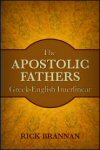
Those known as “Apostolic Fathers” wrote what has become some of the most important literature in the early church—letters and epistolary documents, homilies and theological tracts, documents on church order, and apocalyptic literature. In fact, some texts came close to inclusion in the New Testament canon. Tertullian regarded Hermas as Scripture, Irenaeus treated 1 Clement as canonical, and Origen regarded the Didache as inspired. Barnabas and Hermas were included in Codex Sinaiticus and 1 Clement and 2 Clement were included in Codex Alexandrinus. The near-canonical status of the writings of the Apostolic Fathers in the early church makes their importance for modern study undisputed.
Following the model of other interlinears produced by Lexham Press (Hebrew Bible, New Testament, Septuagint), The Apostolic Fathers Greek–English Interlinear presents two levels of interlinear translation. The first is the lexical value, which is a gloss of the lexical or dictionary form of the word. The second is the English literal translation, a contextually sensitive gloss of the inflected form of the word. The difference in these glosses is subtle, but powerful. The first gloss answers the question, “What does this word mean?” The second gloss answers the question, “What does this word mean here?”
In addition to the interlinear translations, direct links to Louw and Nida’s Greek-English Lexicon of the New Testament based on Semantic Domains are provided for every Greek word, except for those words not present in the Greek New Testament. These links are context-sensitive and connect directly to the appropriate Louw and Nida article. Those familiar with Louw and Nida’s lexicon know that one Greek word may have many different entries in the lexicon, one for each semantic sense. These Louw-Nida references jump to the appropriate article when there is more than one option—providing a contextually-appropriate lexicon definition for the word under study. These links also allow for searching the Apostolic Fathers text by Louw-Nida domain and article information.
This new interlinear from Lexham Press makes the Greek text of the Apostolic Fathers more accessible and useful for a larger audience. It features a literal translation for each word, a grammatically-informed context sensitive gloss, and other interlinear features. It also includes morphological tagging, idioms and cross-references, and lexical, text-critical, and translational notes.
Rick Brannan has been reading, studying, translating, writing, and blogging about the Apostolic Fathers for years. He edited An English-Greek Reverse Interlinear of the Apostolic Fathers and The Lexham English Bible English-Greek Reverse Interlinear of the New Testament. He has published articles in Bible Study Magazine and presented on matters of Greek grammar and syntax at national meetings for the Society of Biblical Literature (SBL) and the Evangelical Theological Society (ETS). He also presented at the Bible Technologies Conference, BibleTech. He is a member of the North American Patristics Society (NAPS). He works as the information architect for Greek databases and also the product manager of New Testament Greek, New Testament textual criticism, and Patristics resources for Logos Bible Software.
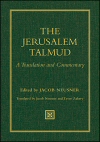
The Jerusalem Talmud, or Yerushalmi, is a commentary on the oral law (the Mishnah) of Israel that ties that oral law to the written law (the Torah, the Hebrew Scripture). Completed about 200 years prior to The Babylonian Talmud.
Now all thirty-nine Yerushalmi tractates, as translated by Professor Neusner and Tzvee Zahavy, have been brought together in a single searchable resource. In addition to a preface and general introduction to the whole work, Professor Neusner has provided fresh and helpful introductions to each of the tractates. He has also provided within his translation the references to Bible verses alluded to in the Yerushalmi.
Jacob Neusner is Research Professor of Religion and Theology, Bard College, and Senior Fellow of the Institute of Advanced Theology at Bard College. He has published more than nine hundred books and innumerable articles, and he is editor of The Dictionary of Judaism in the Biblical Period and the five-volume Encyclopaedia of Judaism. He has also served as President of the American Academy of Religion, and was appointed as Member of the National Council on the Humanities and the National Council on the Arts.
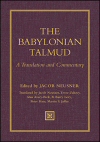
The Talmud of Babylonia (a.k.a., the Bavli, or Babylonian Talmud), is a sustained commentary on the written and oral law of Israel. Compiled between 500–600 C.E., it offers a magnificent record of how Jewish scholars preserved a humane and enduring civilization. Representing the primary document of rabbinic Judaism, it throws considerable light on the New Testament as well.
This monumental English translation was completed a decade ago—but was extraordinarily expensive and difficult to find. Featuring translations by Jacob Neusner, Tzvee Zahavy, Alan Avery-Peck, B. Barry Levy, Peter Haas, and Martin S. Jaffee, and commentary and new introductions by Jacob Neusner, all thirty-seven Talmudic tractates are available in this single searchable resource. With Logos Bible Software, the instantaneous searches by word or phrase provide exceptional research capabilities, and opens swift avenues for exploration and discovery.
Jacob Neusner is Research Professor of Religion and Theology, Bard College, and Senior Fellow of the Institute of Advanced Theology at Bard College. He has published more than nine hundred books and innumerable articles, and he is editor of The Dictionary of Judaism in the Biblical Period and the five-volume Encyclopaedia of Judaism. He has also served as President of the American Academy of Religion, and was appointed as Member of the National Council on the Humanities and the National Council on the Arts.
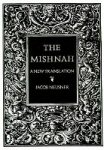
The Mishnah: A New Translation
- Author: Jacob Neusner
- Publisher: Yale University Press
- Publication Date: 1988
The eminent Judaica scholar Jacob Neusner provides here the first form-analytical translation of the Mishnah. This pathbreaking edition provides as close to a literal translation as possible, following the syntax of Mishnaic Hebrew in its highly formalized and syntactically patterned language. Demonstrating that the Mishnah is a work of careful and formal poetry and prose, Neusner not only analyzes the repeated constructions but also divides the thoughts on the printed page so that the patterned language and the poetry comprised in those patterns emerge visually.

Mekhilta de-Rabbi Ishmael is a classic collection of midrash. It contains commentary on a large part of the Book of Exodus (chapters 12 to 23) and represents the two main modes of interpretation: the halakhah (legal doctrine), and the aggadah (moral and religious teachings). The work also contains allusions to historical events and ancient legends not found elsewhere. A new introduction by noted scholar David Stern highlights the work. It retains the original text – based on manuscript and early editions – from the JPS 1933 edition.
This classic work is widely recognized as a model of meticulous and thorough scholarship. Its translation is accurate, straightforward, and usable by scholars, students, and lay readers. Out of print for many years, Mekhilta de-Rabbi Ishmael should belong to every rabbi, rabbinical school, and Jewish Studies professor, or anyone interested in Midrash.
Jacob Lauterbach (1873-1942) was born in Galicia, studied in Germany, and received rabbinical ordination. In 1903 he immigrated to America and later became professor of Talmud at the Hebrew Union College. A prolific author, his greatest work is considered to be his edition of the Mekhilta, originally published in 1933.

Mekhilta de-Rabbi Shimon bar Yohai
- Author: W. David Nelson
- Publisher: Jewish Publication Society
- Publication Date: 2006
- Pages: 1,100
The Mekhilta de-Rabbi Shimon bar Yohai is a collection of classical midrashic interpretation of the biblical Book of Exodus. Lost for centuries, the text was reconstructed and recovered in the 19th and 20th centuries by both German and Israeli scholars from a variety of source materials, including medieval manuscripts of the text and midrashic anthologies. As one of the first collections of rabbinic biblical interpretation, the Mekhilta de-Rabbi Shimon bar Yohai is an indispensable source for understanding the history, beliefs, and practices of the earliest rabbis. A critical introduction provides the reader with a firm grounding in the historical setting of the text, as well as its source material, reconstruction, subject matter, and significance for understanding the history of Judaism.
W. David Nelson received an M.A. in bible and cognate studies and Ph.D. in rabbinic literature and thought from Hebrew Union College-Jewish Institute of Religion. He is the Rosalyn and Manny Rosenthal Assistant Professor of Jewish Studies and the director of the Program in Jewish Studies at Texas Christian University and Brite Divinity School in Fort Worth, Texas.
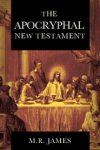
The Apocryphal New Testament: Being the Apocryphal Gospels, Acts, Epistles, and Apocalypses
- Author: Montague Rhodes James
- Publisher: Clarendon Press
- Publication Date: 1924
- Pages: 578
The Apocryphal New Testament contains a wide range of early Christian writings in a clear English translation. As a collection of religious books, Apocryphal literature was meant to reinforce Christian belief and practice. As history, the Apocrypha aims to supplement the historical data in the New Testament. Their stories are remarkable, beautiful, and imaginative, and have exercised a powerful influence on the development of Christianity. Anyone who cares about the history of Christian thought cannot neglect them.
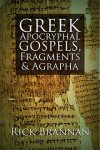
Greek Apocryphal Gospels, Fragments, and Agrapha
- Author: Rick Brannan
- Publisher: Lexham Press
- Publication Date: 2012
The documents in this resource are primary sources that show the religious context around the early church. Written after the ministry of Christ and the apostles, these collections of writings are not considered to be divinely inspired and were considered by many early Christians to be heretical. These writings were never included in a Bible but were used by some heretical groups. They are useful in tracing the history of non-Christian understandings of Jesus and the teachings of the apostles.
Lexham Press is pleased to present the Greek Apocryphal Gospels, Fragments, and Agrapha. It includes the Greek text—with automated morphology—of several apocryphal gospels in Greek (Infancy, Passion, and Post-Resurrection), papyrus fragments, and a small collection of agrapha. Introductions, bibliographies, and the English translation for each gospel are provided.
Logos Bible Software has all the resources you need for studying the apocryphal gospels in Greek. The Logos edition of the Greek Apocryphal Gospels, Fragments, and Agrapha provides an easy way to study these writings side by side with your other apocryphal resources like M. R. James’ The Apocryphal New Testament. Double-click any word and your preferred lexicon will automatically open to the exact entry! Whether your interest is simple cultural study or in-depth genre studies, the Greek Apocryphal Gospels, Fragments, and Agrapha will help you study these texts.
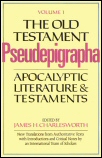
Old Testament Pseudepigrapha, vol. 1
- Publication Date: 1983
- Pages: 1,056
Volume 1 of this work contains two sections. The first is Apocalyptic Literature and Related Works. An apocalypse, from the Greek meaning revelation or disclosure, is a certain type of literature which was a special feature of religions in late antiquity. In the past, the definition was derived from the study of only some of the extant apocalypses, especially the Apocalypse, the Book of Revelation. This has changed, and the present edition of the pseudepigrapha includes nineteen documents that are apocalypses or related literature. It will now be easier to perceive the richness of apocalyptic literature and the extent of early Jewish and Christian apocalyptic ideas and apocalyptic religion.
These new translations present these important documents, many for the first time in modern English, for all "People of the Book" to study, contemplate, and understand.
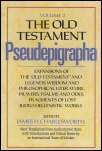
Old Testament Pseudepigrapha, vol. 2
- Publication Date: 1985
- Pages: 1,056
The publication of Volume 2 of Charlesworth's Pseudepigrapha completes his landmark work. Together with Volume 1, Apocalyptic Literature and Testaments, these new translations present important documents, many for the first time in English.
The second volume contains Expansions of the "Old Testament" and Legends, Wisdom and Philosophical Literature, Prayers, Psalms and Odes, Fragments of lost Judeo-Hellenistic Works. The section on the Old Testament contains clarifications, enrichments, expansions, and retellings of biblical narratives. The primary focus is upon God's story in history, the ongoing drama in which the author claims to participate. Charlesworth's discussion of Wisdom literature contains various collections of wise sayings and philosophical maxims of the Israelites. In his discussion of Psalms, prayers, and odes, Charlesworth presents collection of hymns, expressions of praise, songs of joy and sorrow, and prayers of petition that were important in the period 100 B. C. to A. D. 200. The section of fragments of lost Judeo-Hellenistic works reflect ideas associated with the Persians, Greeks, and Romans, often filtered through the cultures of Syria and Egypt. These fragments are examples of how this mix of cultures influenced Jewish writings.

The Works of Philo
- Authors: Philo of Alexandria and Charles Duke Yonge
- Publisher: Hendrickson
- Publication Date: 1995
- Pages: 924
Philo of Alexandria was a Jewish philosopher who lived in Roman-ruled Egypt. When the Jews of Alexandria were ordered to defy their beliefs and worship Gaius Julius Caesar, also known as Caligula, they sent Philo to plead their case to the emperor. Philo’s writings provide an account of the atrocities the Jews faced for their refusal to glorify a man as a god. They were dragged to death, burned alive with their families, slaughtered in their homes, and even crucified. Well versed in Greek and Jewish learning, Philo integrated biblical teachings with Greek philosophy, giving rise to an influential approach to Scripture. The ideas that emerged impacted both Christian and Jewish religious thought.
Complete and unabridged, this updated version of The Works of Philo is the most complete one-volume edition of the writings of Philo. Here in translation by the eminent classicist, C. D. Yonge, this edition provides easy access to writing crucial for historians and students of Hellenistic Judaism and early Christianity.
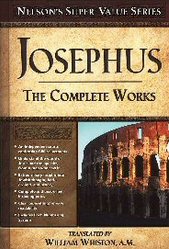
The Works of Josephus
- Authors: Flavius Josephus and William J. Whiston
- Publisher: Hendrickson
- Publication Date: 1987
Titus Flavius Josephus, as a writer and historical figure, sits at the intersection of history. After being captured by Roman forces led by Vespasian, Josephus claimed that the Jewish Messianic prophecies pointed to Vespasian as the future Emperor of Rome. Two years later, Vespasian did become Emperor, and he granted Josephus his freedom. Josephus took on Vespasian’s family name—Flavius—and became a Roman citizen. As a historian, Josephus provided invaluable records of the Jewish War, addressed to the Jews living in Mesopotamia. Throughout Christian history, the writings of Josephus have been indispensable to a proper understanding of Jewish thought, background, and history up to and around the time of Christ.
This volume provides the most complete one-volume edition of William Whiston’s classic translation of the Works of Josephus, with the full text and notes of the original four-volume set.
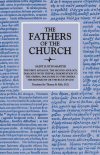
The First Apology, The Second Apology, Dialogue with Trypho, Exhortation to the Greeks, Discourse to the Greeks, The Monarchy of the Rule of God
- Author: Justin Martyr
- Translator: Thomas B. Falls
- Series: Fathers of the Church
- Publisher: Catholic University of America Press
- Publication Date: 1965
- Pages: 486
Justin Martyr, of the early second century AD, was well educated at a young age, and as an adult, pursued the philosophies and intellectual paths of the Greeks in search of the truth that governs the universe. Upon encountering the Christians, Justin quickly converted, finding no other “sure and useful philosophy” as Christianity. Once a Christian, he put all of his energy into spreading the gospel, and continued to engage on philosophical grounds with those he met—of all walks of life. These writings reflect the very first philosophical Christian writings—including the first philosophical exposition of the Logos and the first attempt to reconcile faith and reason.
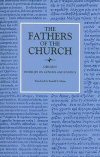
Homilies on Genesis and Exodus
- Author: Origen
- Translator: Robert E. Heine
- Series: Fathers of the Church
- Publisher: Catholic University of America Press
- Publication Date: 1982
- Pages: 434
Origen, son of the martyr Leonides, oldest in a family of seven children was born probably at Alexandria 184/85 and died probably in Tyre 253/54 after imprisonment and torture during the Decian persecution. Surnamed “man of steel,” Origen was an outstanding theologian of the early Greek-speaking Church, a man of the virtue and a genius with a prodigious capacity for work, an excellent teacher to whose lectures students flocked “and did not give him time to breathe for one bath of pupils after another kept frequenting from morn till night his lecture-room” (Eusebius, H.E. 6, 15).
As an author Origen surpasses all the writers of the Early Church in literary output. A list complied by Eusebius, now unfortunately lost, credited Origen with some 2000 books. Even a far shorter list known to St. Jerome and mentioned by him in his Letter To Paula giving the number of 786 works is still impressive. Jerome then goes on to add some reflections. “Do you see the Greeks and Latins outstripped by the work of one man? Who could ever read all that he wrote? What reward did he receive for this exertion? He is condemned by bishop Demetrius; except for the bishops of Palestine, Arabia, Phoenicia and Achaia the world concurs in his condemnation. Rome itself convokes an assembly against this man not because of novelty of teachings, not because of heresy as now mad dogs pretend against him, but because they could not bear the fame of his eloquence and learning and were considered speechless when he spoke.”
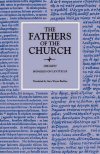
Homilies on Leviticus, 1–16
- Author: Origen
- Translator: Gary Wayne Barkley
- Series: Fathers of the Church
- Publisher: Catholic University of America Press
- Publication Date: 1990
- Pages: 312
This new translation of Origen’s Homilies on Leviticus may be read as a companion to Ronald E. Heine’s translation of Origen’s Homilies on Genesis and Exodus, volume 71 in the Fathers of the Church series. Both volumes reveal Origen’s tenacious belief that, although the meaning of Scripture was threefold, that is, literal, moral, and spiritual, the most important interpretation was the spiritual.
The Homilies on Leviticus were delivered during a three-year cycle between 238 and 244 in Alexandria where Origen was a brilliant teacher, theologian, churchman, and exegete until his imprisonment and torture under Decian and his reluctant death in Tyre in 253/254. They were translated by Rufinus, who admitted to having changed the text by condensing the homilies and, at the same time, expanding some of the explanations. Nevertheless they provide valuable insights on the third-century Church, touching on topics of conversion from sin, works of piety, baptism, Lent and fasting, the ordination of a priest, and the process of Christian discipline. Perhaps Origen’s most significant theological contribution, however, is his doctrine of the Trinity which influenced the Trinitarian debates of the fourth and fifth centuries.
Origen was the most prolific writer of the Early Church. Eusebius numbers his books at 2000, and St. Jerome writes of 786 works. But Origen’s chief aim, as an interpreter of the Scriptures, was to draw out the historical meaning of the text and communicate that wisdom of perception to his flock. It was this that inspired his profound spiritual interpretation in the Homilies on Leviticus so finely translated in this volume.
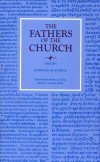
Homilies on Joshua
- Authors: Origen
- Translator: Barbara J. Bruce
- Series: Fathers of the Church
- Publisher: Catholic University of America Press
- Publication Date: 2002
- Pages: 240
These homilies were among the last Origen gave before his torture and death during the Decian persecution, around 254.
With the saga of the Israelites entering and possessing their promised land, Origen unfolds the story of the Christian life from baptism to resurrection. He exhorts his hearers to persevere in their own struggles to overcome the enemies of their souls and obtain their own inheritance. Their leader is Jesus, the Son of God, who is prefigured in Jesus (Joshua), the son of Nun. All battles, victories, and defeats happen within the individual; all aspects of the Law and temple become but shadows of the fulfilling work of God in Jesus Christ. The story brims with allegory and passion, a passion for the people and for their priests who, “standing near the blazing fire of the altar,” must illuminate the path for others.
As Origen exhorted, others wrote down his words, words he had asked the people to pray for and the Spirit to supply. Most of the original writings in Greek were lost during the centuries when Origen was officially defamed. What we have today is the Latin translation by Rufinus, the basis of the translation in this volume. In the Introduction, Barbara J. Bruce discusses and affirms the reliability of the Latin text, and briefly looks at Origen’s ministry, his concept of the nature of Scripture, and his method of interpretation.
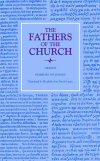
Homilies on Judges
- Author: Origen
- Translator: Elizabeth Ann Dively Lauro
- Series: Fathers of the Church
- Publisher: Catholic University of America Press
- Publication Date: 2009
- Pages: 152
In his General Audience of May 2, 2007, Pope Benedict XVI praised Origen for his “primordial role” in the history of lectio divina, the prayerful reading of Scripture. He explained that Origen approaches Scripture reading not as “mere study” but as the pathway to knowing Christ and “falling in love with him.” Origen’s nine extant homilies on Judges exemplify this approach.
In them, Origen calls his audience to participate in a loving relationship with Christ through interaction with Scripture. Delivered sometime between 238 and 248, these homilies expound on themes extracted from Judges 2–7. Some of the homilies focus generally on God’s redemption of Israel through judges after each cycle of sin, enslavement, and repentance, while others stress that victory belongs to God alone through events such as the defeat of the Midianites by Gideon’s meager army of 300 men, Gideon’s test with the fleece, and the murder of the Philistine general Sisera by the woman Jael. The homilies brim with hope in Christ’s ultimate victory over sin and death, a hope that is specific to the individual believer but accessible only within the Church.
Origen applies his allegorical method of Scriptural interpretation to these passages, sometimes drawing faith-enriching meaning from the literal (somatic) sense as well as from one or both of the two figurative (psychic and pneumatic) senses. Using both allegory and typology, Origen shows his audience God’s abundant mercy and grace, the power of Scripture to assist in the battle against sin and the promotion of virtue, and the church leader’s duty to walk his flock through the transforming terrain of Scripture toward likeness to and union with Christ.
Largely because of early controversies over Origen’s legacy, these homilies are extant only in Rufinus’s fourth-century Latin translation, but his ability to capture Origen’s meaning and spirit is well documented. This is the first-ever English translation of Origen’s homilies on Judges.
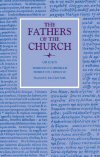
Homilies on Jeremiah and I Kings 28
- Author: Origen
- Translator: John Clark Smith
- Series: Fathers of the Church
- Publisher: Catholic University of America Press
- Publication Date: 1998
- Pages: 379
Souls existing before their bodies, witches summoning dead prophets from the underworld, the return of the damned—and the Devil himself—to God in the end, and many other theological speculations surprise the reader of Origen’s Homilies on Jeremiah and I Kings 28. Some of these very theses of the third-century priest from Alexandria, Egypt, were condemned in the Second Council of Constantinople. But plumbing the mystical depths of the Prophecy of Jeremiah is the central point of the homilies.
Presented in this volume are the remains of 22 homilies and a collection of fragments delivered by Origen around AD 240. The original texts of the homilies on Jeremiah have not come down to us completely; two of the homilies survive only in a Latin translation of St. Jerome. The homily on I Kings 28, while not a part of the homilies on Jeremiah, deals with the Witch of Endor and has been added to this volume in virtue of its own inherent interest.
In this collection, Origen seeks understanding of the significance of the hostility of the Chosen People towards the Prophet Jeremiah before their captivity in Babylon. Origen in many ways identified with the great prophet and thought of Jeremiah as a type for Christ in the Hebrew Scriptures. Origen realized that Jeremiah came at a crucial time in the history of Israel, the time of captivity, and he views this event and the events around it as pregnant with meaning for the people of his time.
Watching a master grapple with admittedly difficult, obscure texts and give them compelling, forceful delivery must have impressed Origen’s congregation. Readers will find it no less engaging to read his homilies now and experience some of that exhilaration of hearing a true expert highlight every subtlety of the pericope and make plain what once was obscure.
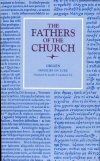
Homilies on Luke
- Author: Origen
- Translator: Joseph T. Lienhard
- Series: Fathers of the Church
- Publisher: Catholic University of America Press
- Publication Date: 1996
- Pages: 285
Thirty-nine of Origen’s homilies on the Gospel of Luke survive in Jerome’s Latin translation. Origen preached them in Caesarea, perhaps around 234 or 240, to a congregation of catechumens and faithful. Most of the homilies are short; on average, they treat about six verses of the Gospel and would have lasted between eight and twelve minutes. The first 33 homilies treat chapters one through four of Luke’s Gospel; the remaining six treat passages from the tenth to the twentieth chapters.
Origen’s homilies are the only extant patristic writing devoted to Luke’s Gospel before Ambrose’s Exposition on Luke, written ca. 390 (and Ambrose himself followed Origen, sometimes quite closely). Homilies 1 to 20 also constitute the only existing commentary from the pre-Nicene Church on either Infancy Narrative. Several hundred fragments of Origen’s homilies and commentary on Luke also survive, mostly in Greek.
Henri de Lubac formulated the important principle, “Observe Origen at work,” and Origen’s writings on Luke’s Gospel are an intriguing place to do that. Origen, the champion of spiritual interpretation, regulary beings with a painfully literal reading of the text. His first unit of understanding is the word, and often the key that unlocks the meaning of a word in the Bible for him is the use of that same word elsewhere in Scripture. Origen assumed that each word had a meaning that is both profound and relevant to the reader—for the Holy Spirit is never trite and what the Holy Spirit says must always touch the hearer.
This volume, the first English translation of the extant homilies and of fragments from the commentary on Luke, is an important addition to the growing body of Origen’s work now available in English.
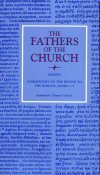
Commentary on the Epistle to the Romans, Books 1–5
- Author: Origen
- Translator: Thomas P. Scheck
- Series: Fathers of the Church
- Publisher: Catholic University of America Press
- Publication Date: 2001
- Pages: 424
Origen of Alexandria’s Commentary on the Epistle to the Romans is the oldest extant commentary on Romans (ca. 246). This volume presents the first English translation of the commentary, covering his exegesis of Rom 1:1 to 6:11. One of his longest and most mature works, it is the only commentary of Origen available in a coherent form from beginning to end. The work was originally composed in Greek in Caesarea, but only fragments of the archetype have survived. Fortunately, Origen’s admirer Rufinus of Aquileia translated the work into Latin (ca. 406).
Origen’s exegesis predates the controversy between Augustine and Pelagius by 170 years; thus it offers a striking perspective on Romans. Opposition to Gnostic interpretations of Paul is an important characteristic of the commentary. Above all Origen defends the Church against the “doctrine of natures”—the belief that all human beings are born with unalterable natures, either good or evil, and thus bound for either salvation or damnation, and that their conduct during this life cannot alter their destiny. Origen successfully refutes this teaching, showing that freedom of will always abides in rational beings.
Provoked by Marcion’s repudiation of the Old Testament, Origen emphasizes the harmony between Gospel and Law. He highlights as one of Paul’s main themes in Romans the transfer of religion from Judaism to Christianity, from the letter to the spirit, in terms both of salvation history and of the transformation of the individual. Origen claims that the key to unlocking Romans is understanding Paul's use of homonyms—identical expressions such as law, Jew, circumcision, death, etc., with divergent meanings.
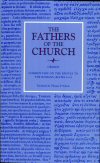
Commentary on the Epistle to the Romans, Books 6–10
- Author: Origen
- Translator: Thomas P. Scheck
- Series: Fathers of the Church
- Publisher: Catholic University of America Press
- Publication Date: 2002
- Pages: 340
This volume completes the first English translation of Rufinus’s Latin version of Origen of Alexandria’s Commentary on the Epistle to the Romans and contains Origen’s detailed exegesis of Romans 6:12–16:27. Origen’s much neglected Commentary, which stands out in splendid isolation at the fountainhead of Greek and Latin exegesis, is now completely accessible to English readers.
In Books 6–10, Origen carries through to completion his program, begun in Books 1–5, of defending human freedom and of opposing the natural predestinarian doctrine of the sects founded by the Gnostic heretics Marcion, Valentinus, and Basilides. These schools relied heavily on texts from Paul, interpreted in isolation from the rest of Scripture, not only to deny free will but to support the doctrine that salvation is determined by the nature one receives at birth, whether good or evil. In contrast Origen clarifies passages in Romans by citations from Paul’s other letters, from the Gospels, and from the Old Testament. He attempts to construct a coherent and unified “biblical theology.” Origen views human beings as chosen or rejected by God deservedly; everyone has it within his own power whether he becomes a servant of God or of sin, a vessel of wrath or of mercy.
Whether one sympathizes with Origen’s interpretations or finds them infuriating, it is difficult not to admire his concordance-like mind at work as he tackles the apostle Paul’s greatest epistle. Readers will find interesting and thought-provoking discussions of all the important theological themes and terms of Romans: faith, hope, love, works, justification, election, law, Israel, Gentiles, Church, sin, death, flesh, body, glory, etc. The importance of these discussions is magnified by the fact that they stand alone in their detail and breadth and stem from the Church’s most important theologian of the third century. Moreover, because Origen’s work was productive in subsequent centuries in Rufinus’s Latin translation, the Commentary is of outstanding importance for the history of New Testament exegesis.
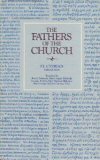
Treatises
- Author: Saint Cyprian
- Translator: Roy J. Deferrari
- Series: Fathers of the Church
- Publisher: Catholic University of America Press
- Publication Date: 1956
- Pages: 387
This volume presents several treatises of St. Cyprian in translation. To Donatus (Ad Donatum) is a monologue written shortly after Cyprian’s baptism in 246 in which he extols his spiritual rebirth in the sacrament of baptism. Literary criticism has come to view this treatise as a model for St. Augustine’s Confessions. The Dress of Virgins (De habitu virginum) written in 249 is addressed to women (“flowers in the Church’s garden”) who have dedicated their lives to God’s service. In this treatise on virginity Cyprian warns these women against seeking finery and the pitfalls of worldliness.
The Fallen (De lapsis), written in 251, deals with the problems encountered in reconciling with the Church those who had defected during the time of persecution. These problems were acute especially after the Decian persecution. The Unity of the Catholic Church (De unitate ecclesiae), written very likely in 251, is directed in the first place against the Novatian schism. This treatise contains the famous words: “He cannot have God for his father who does not have the Church for his mother.”
The Lord’s Prayer (De oratione dominica) is as the title indicates a commentary on the Our Father. Many of its words and phrases remind one of Tertullian whom Cyprian admired greatly. To Demetrian (As Demetrianum) is a vigorous defense of Christianity against pagan calumnies. Mortality (De mortalitate) written perhaps in 252 or later has often been described as being a pastoral letter of a bishop to comfort and console his flock during a time of trial and tribulation.
Work and Alms (De opere et eleemosynis) is a treatise that may have been written in 252 or even later. It is a warm and heartfelt exhortation of a bishop to his flock encouraging them to do good works. The Blessing of Patience (De bono patientiae), written sometime during the year 256, has frequently been described as a sermon delivered during the controversy over the validity of heretical baptism in northern Africa.
Jealousy and Envy (De zelo et livore) like the preceding treatise greatly resembles a sermon delivered on the topic in the title. It was probably written between 251 and 257. To Fortunatus (Ad Fortunatum), a work replete with quotations from Scripture to encourage a Christian in time of persecution, was probably written between 253 and 257. In its original Latin this treatise is an important witness to the text of the Bible before St. Jerome’s revisions. That Idols are not Gods (Quod idola dii non sint) is a relatively unimportant work when judged on the basis of its content. Modern patristic scholars seriously doubt its authenticity.
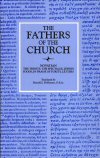
The Trinity, The Spectacles, Jewish Foods, In Praise of Purity, Letters
- Author: Novatian
- Translator: Russell J. DeSimone
- Series: Fathers of the Church
- Publisher: Catholic University of America Press
- Publication Date: 1974
- Pages: 232
After Novatian’s break with the Church over the treatment of Christians who had lapsed in the persecution of Decius (AD 250–52), Church authorities were reluctant to recognize officially his contributions to Christian theology. Because his writings were too valuable to ignore, a number of them were attributed to less controversial authors. On the basis of stylistic and other internal evidence, scholars have been able to retrieve Novatian’s work from obscurity and to give him recognition as a pioneer of Roman Latin theology.
This volume presents translations of all Novatian’s surviving writings, which appear together in English for the first time under their author’s name. The collection opens with the work that most clearly defines him as a theologian of central importance: The Trinity. This treatise refuted current heresies concerning Christ’s dual nature and God’s total spirituality.
The collection also contains a trilogy of pastoral letters: In Praise of Purity, The Spectacles, and Jewish Foods. Novatian, absent from his community, writes to his adherents about current problems in Christian morality and encourages them to remain faithful to the Gospel. In the three letters, written to Cyprian Bishop Carthage after the martyrdom of Pope Fabian, Novatian speaks for the Church at Rome. They are an important source for the study of Penance as practiced by the early Church. Novatian insisted that those who had denied Christ during the persecution should be most strictly dealt with. There is little in him of Cyprian’s conciliatory tone. Novatian’s Letters illumine a third-century controversy that offers new perspectives for modern re-examination of the sacrament.
Reviews
5 ratings

diederick pütter
3/10/2024

Forrest Cole
11/9/2021
Robert J Richardson
3/27/2020

Matthew Joseph Morris
11/1/2018
Chaplain McCollum
5/31/2018